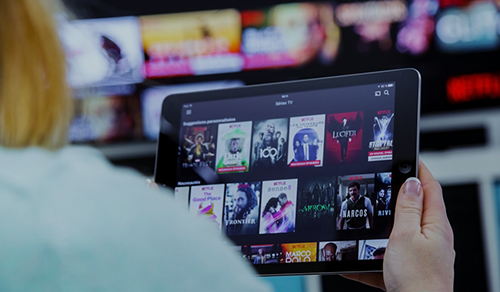We Love the Business Model Canvas (and so should you!)
In 2008, Alex Osterwalder developed a tool to facilitate the analysis, mapping, and visualization of a company's business models. The “Business...
Imagine that you are going to build your own house, the one you have dreamed of and for which you have been saving for years, you have everything in your mind, but still nothing in writing, would you think of starting the construction without having the plans ready? Probably not, the builders would have a lot of problems with the dimensions and characteristics of the house, plus it would be difficult to determine the time and cost of the project. They would not even know where to start.
In the same way, every business should have a roadmap that sets out the elements necessary for it to function, and without it, it could run into problems along the way.
In the past, companies manufactured their products or offered their services with an associated cost and that was it, they thought only about how the company made a profit from what it produced. There was no further analysis in the process, but consumer behavior has changed and today we can even say that we are facing an expert consumer. With technological advances, the presence of digital tools and the emergence of multiple channels, people have information in the palm of their hands and when faced with a problem, the answers are just a click away.
Therefore, it is important to offer the customer added value, that they are not just buying one more product or acquiring a service, they require a complete experience because if their expectations are not met, the competitive market in which we find ourselves today offers them hundreds of other options.
New needs have arisen and with this, so have opportunities for change.
Index
According to Alexander Osterwalder and Yves Pigneur, in the book "Business Model Generation", they define a business model as that which describes the basis on which a company creates, provides, and captures value. As I said, in the past, not all the necessary elements were considered and therefore they are obsolete models. Today, innovative models are required that provide long-term value to both the company and the customer.
If you want to read about the history of the concept of "business model" and the definitions provided by different authors, you can read What is a Business Model? Harvard Business Review.
It should be emphasized that the business model should not be confused with strategy, although associated, the business model explains how the company works while the competitive strategy defines the actions that will make you better than others in your sector. Moreover, the model should be established before the business plan.
>> 14 Patterns of successful business model <<
Remember that in the end it boils down to trying to give the customer a value offer that makes money for the business. For this, you need to avoid improvisation and understand the elements that influence the day-to-day.
In the book "Generating business models" it mentions 9 modules with which the company obtains its income.

As the philosopher Lucius Annaeus Seneca said, "no wind is favorable to those who do not know what port they are heading for". If you don't have a defined course, how do you know where to put your efforts? Remember the analogy at the beginning, as it is to start building a house without plans designed by the architect, so it is to run a company without a business model. Without a blueprint that tells you everything you need to get the project off the ground, you are adrift.
>> Business Model Fundamentals: What do you need to know? <<
Defining it correctly will give you a guide to your value proposition, the customers who are willing to buy it and how much it will cost. Also, the activities and resources needed to create the proposition, the channels, who your competitors are and what opportunities for improvement exist in your company.
That is why it is so important to define the business model before leaving the port, if you establish the elements mentioned above you will know exactly how your company is doing and you will be able to fit all the pieces together in a way that generates profits.
Having a business model is useful not only for new projects, in the pre-market introduction stage, but also for consolidated companies where management understands that stagnation and statics do not allow the company to grow. If you already have one, it is healthy to rethink the current business model to innovate on it, as well as to investigate other types.
If you want to know more about the signs that may indicate that it is time to adjust, you can read 10 Signs that it is time to update your business model.
If you are planning to go out into the world with your new business, it is essential that you have the plans to build it, and if you already have a business that is going on the road, it is never too late to develop a business model that will help you to optimize the current situation. The important thing to understand is that the business model gives you key information about how the business works and that it is not the same formula for all businesses.
In this section we will talk about success stories, companies that have applied a type of business model and have managed to stand out in the market. Let's remember that there is not just one type of business model and you can't use any of them in your company. Some that I can mention are:
In the following link you can find the explanation of some of these types of business models given by Strategyzer: Types of Business Models.

The first success story is based on the bait and hook model, which consists of offering a basic product at a low price (bait) and an accessory or associated product at a high price (hook), earning the profits from the latter. Gillette uses this business model because it changed the sale of durable razors by lowering prices for greater accessibility but generating revenue through blade replacements.

Franchising involves replicating an existing business in a location where it does not exist, expanding its brand to other geographical areas. The leading company in this model is McDonald's with branches almost everywhere in the world, but Subway, KFC, Burger King, and others can also be mentioned.

The next is the long tail model, which was developed by Chris Anderson. This model makes it possible to offer a wide range of specialized products that individually do not generate a large volume of sales, but in a summative way. The leading company is undoubtedly Amazon, which sells many low-selling products that cumulatively create a large market.

Companies that operate this type of model offer a value proposition in exchange for the subscription payment, such is the offer that it compensates for paying a fee. As we all know, Netflix is a streaming platform that operates worldwide offering audiovisual content such as series, movies, and documentaries in exchange for a monthly subscription plan.
With these cases of well-known companies, you can understand the influence that a correct business model has on the success of a brand. In conclusion, understanding the pillars that support your company is key to move forward in the market and find opportunities for improvement.

In 2008, Alex Osterwalder developed a tool to facilitate the analysis, mapping, and visualization of a company's business models. The “Business...

The ability of people to innovate never ceases to amaze us, companies are continuously developing innovative products. Despite their innovations,...

When searching the internet for what a business model is, you have probably come across the following sentence by Alex Osterwalder: "A business model...